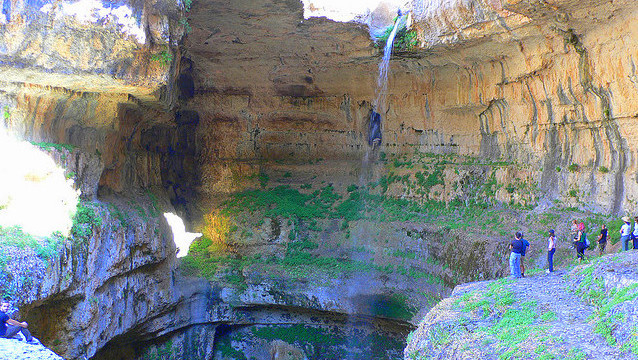|
A sandy road behind the chapel goes east to “Wadi Chhahir”, soon becomes a footpath leading to “Ain Chhahir” water spring and continues steep uphill to the pass under the towering “al-Borj”.
Do not confound “chhahir” with the more known “chharir”, plural of “chahrour”, arabic for black bird. “Chhahir” derives from “chahhar”, black soil, related to dark red soil due to iron ore implying perhaps that spring water might have high tenure in minerals.
A nice flat meadow and we arrive to the rock dwellings, altitude 1710m, culminating point of the trail. It is said that an angry bishop built those rooms between rocks and resided there with his followers.
Crossing the asphalt of the Laqlouq-Tannourine road, we pass nice fields to “Ain as-Salib” hamlet, 1750m, continuing along panoramic agricultural roads and footpaths, at ~ the same altitude and passing few water springs including the “liar, so called because it only flows in spring.
We’re now in the private domain of the Chaer’s organic farm. Passage through the large water basins and the cultivated fields is gracefully granted by the owners. Our target, the sinkhole, can now be guessed not so far below.
The way down to Balaa hamlet, 1550m, crosses old sand quarries and again cuts the asphalt to reach the last downhill stretch to the bottom of the sinkhole. Steps have been arranged. Getting there opens in front of the hiker one of the most impressive natural views in Lebanon, the three-bridges sinkhole, named thus because of three arches spanning the sides of the huge opening, 150m deep, altitude 1500m. A waterfall adds to the magic of the place; it dries up in summer. This ends trail T04 (Point C).
There, three options face the hiker: Go up the stairs to the asphalt, logical option for T04; continue along LMT to Tannourine (+2h); or continue to Douma (+3h).
|


